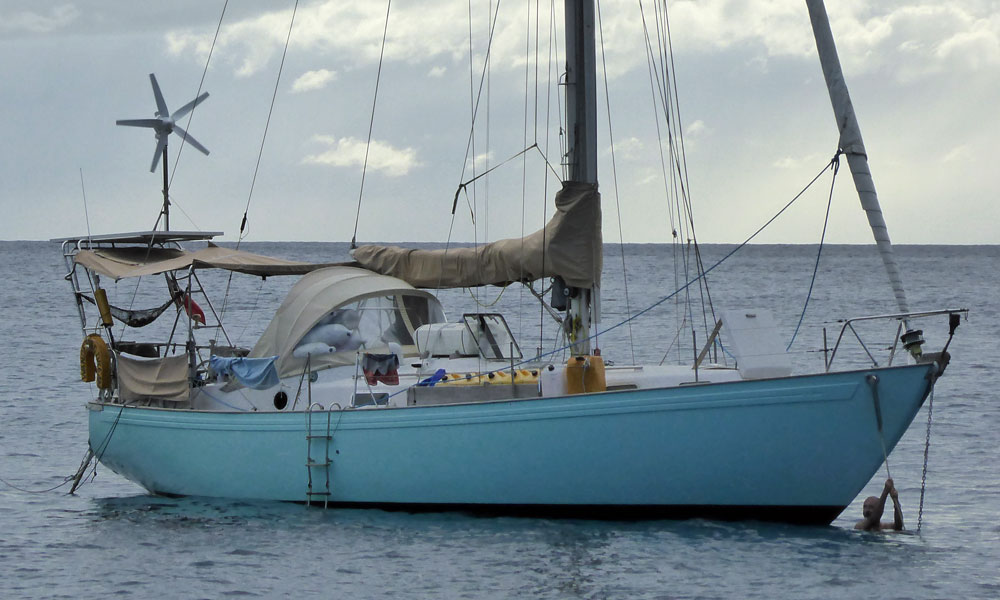Sailboat Design Categories, STIX and Dynamic Stability
Just what are these design categories? In the UK and other EC countries, all pleasure boats must be marked as complying with one of four design categories as set out by the Recreational Craft Directive (RCD).
Similarly all boats built in the US – or anywhere else – for export to Europe, must be certified as complying with one of these design categories.
These four categories A, B, C and D
- A ~ Ocean;
- B ~ Offshore;
- C ~ Inshore;
- D ~ Sheltered Waters.
are described primarily by the wave and wind conditions likely to be encountered and the circumstances under which such a boat might be used.
Design Category A ~ 'OCEAN'
Designed for extended voyages where conditions may exceed winds of Beaufort F8 and significant wave heights of 4m and above, and for which vessels must be largely self-sufficient.
Design Category B ~ 'OFFSHORE'
Designed for offshore voyages where conditions up to, and including winds of wind force 8 and significant wave heights up to, and including 4m may be experienced.
Design Category C ~ 'INSHORE'
Designed for sailing in coastal waters, large bays, estuaries, lakes and rivers where conditions up to and wind force 6 and significant wave heights up to, and including 2m may be experienced.
Design Category D ~ 'SHELTERED WATERS'
Designed for sailing on small lakes, rivers and canals where conditions up to and wind F4 and significant wave heights up to, and including 0.5m may be experienced.
 This Rival 38 was built long before the Recreational Craft Directive came into being, but there's no doubt as to her sea-keeping qualities.
This Rival 38 was built long before the Recreational Craft Directive came into being, but there's no doubt as to her sea-keeping qualities.In allocating a boat to one of the four categories, the boat's displacement and the Angle of Vanishing Stability (AVS) as indicated on its Gz Curve, play a major part.
 Sailboat Design Categories A and B
Sailboat Design Categories A and BCategory A boat limits are a minimum mass of 3.0 tonnes and an AVS greater than [130 - (2 x mass)]º but always equal to or greater than 100º.
Category B boat limits are a minimum mass of 1.5 tonnes and an AVS greater than [130 - (5 x mass)]º but always equal to or greater than 95º.
A Category A boat needs to be to the right of and above the blue line and a Category B boat to the right and above the red line.
But it's not just static stability considerations alone that are taken into account when establishing a sailboat's category - which is where STIX comes in...
ISO 12217, STIX and Dynamic Stability
The International Standards Organisation (ISO) address Small Craft Stability and Buoyancy Assessment and Categorisation under ISO 12217, and similarly use both AVS and mass in dealing with the static stability of monohull ballasted sailing yachts, but take into account a number of other issues in addressing the dynamic issue.
STIX (STability IndeX), a numerical index which scores a boats stability on a scale of 1 to 100, is a function of a number of safety and stability related features, ie:
- length on deck;
- ability to withstand a capsize by considering the area under the Gz curve;
- recovery from inversion by considering AVS and mass;
- recovery from knockdown by overcoming water in the sails;
- displacement/length ratio giving credit for a heavy displacement for a given length;
- beam/displacement factor recognizing problems associated with topside flare and excessive beam;
- wind moment representing the risk of flooding due to a gust
the risk of down-flooding in a broach or knockdown.
STIX scores generally fall in the range 5 to 50 and are applied in addition to the above limits on mass and AVS, ie:
- Category A boats: equal to or greater than 32, and
- Category B boats: equal to or greater than 23.
Since June 1998 all new recreational boats sold in the European Community have been required by law to have undergone a stability assessment with the preferred method being the application of ISO 12217.
This means that all but a very few new monohull ballasted sailing boats sold in the EU will have had a GZ/RM curve generated, their displacement and AVS determined and a STIX calculated.
You Are Here: Sailboat Cruising > Sailboat Design > Design Categories
Recent Articles
-
Ericson Sailboats: History, Models & Buying Guide for Used Yachts
Jun 30, 25 02:18 PM
Explore the legacy of Ericson sailboats! From their Bruce King designs & solid fiberglass construction to popular models like the Ericson 28.5 & 39, get insights for buying used Ericson yachts. -
Elan Sailboats: Quality & Comfort for Cruising & Performance
Jun 30, 25 01:35 PM
Discover Elan yachts: blending exhilarating performance with onboard comfort. From robust construction using VAIL technology to versatile layouts, find out why Elan sailboats are a top choice for recr… -
Dufour Yachts: Explore Models, History & Performance
Jun 30, 25 03:39 AM
Discover Dufour sailboats! From the classic Dufour 2800 to modern Grand Large yachts, learn about their French heritage, design philosophy, construction, and what makes them ideal for recreational cru…

















